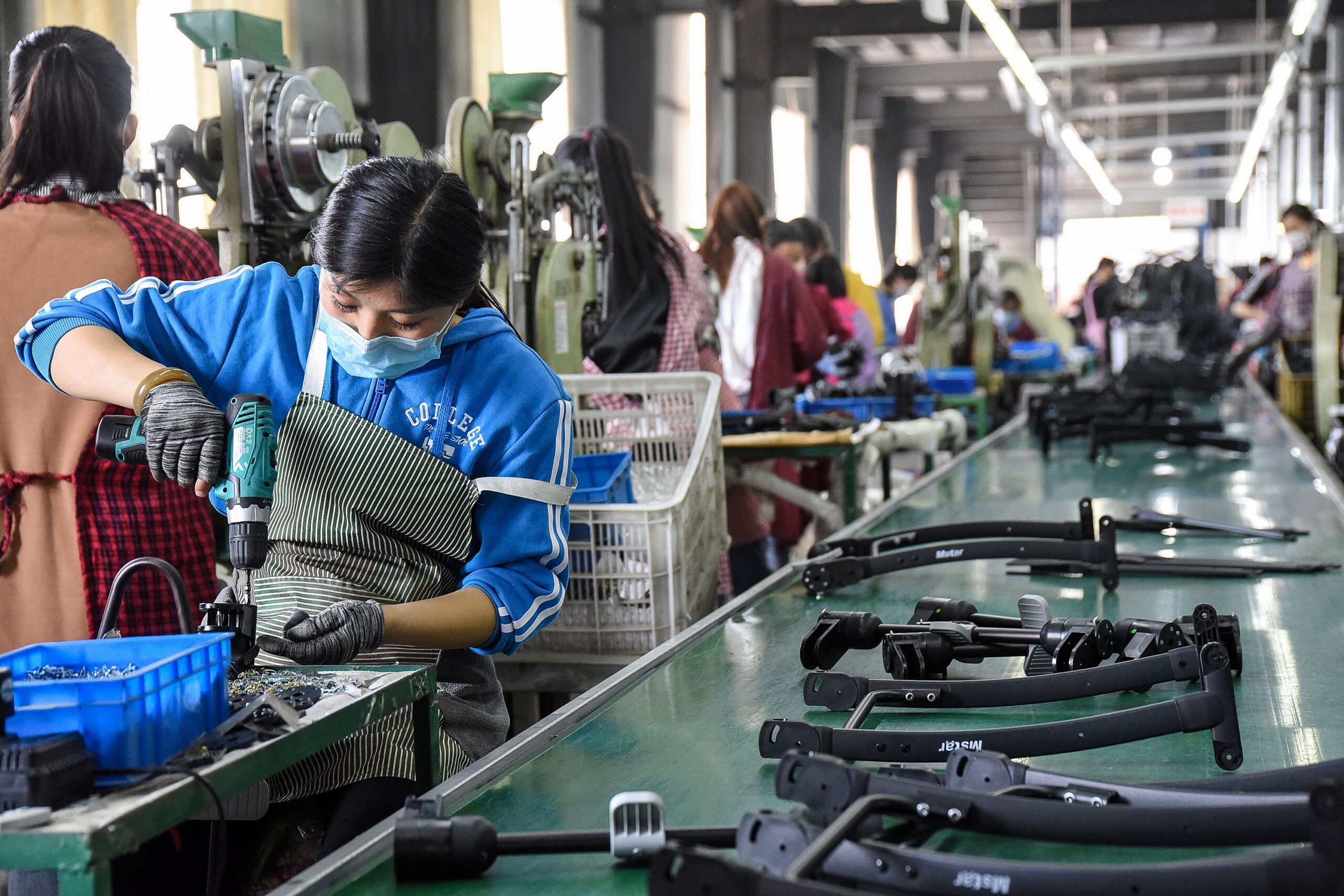China factory prices plunge as virus hammers demand
China’s industries have been hit hard with demand hammered by the coronavirus pandemic (STR)
Beijing (AFP) – China’s factory-gate prices fell to a four-year low, official data showed Tuesday, with firms suffering from the economic devastation unleashed by the coronavirus on the global economy.
The producer price index (PPI) — which reflects what factories charge wholesalers — dropped again, fuelling concern among analysts about the post-pandemic recovery in the world’s second-largest economy.
The PPI plunged 3.1 percent on-year in April — a 1.3 percent monthly drop compared with March — according to China’s National Bureau of Statistics.
Julian Evans-Pritchard of Capital Economics noted that the slump in PPI was its “steepest monthly drop since the Global Financial Crisis” of 2007-08.
The pandemic has hammered the world economy, which is facing its most severe downturn since the Great Depression, with businesses shuttered and huge spikes in unemployment.
The economic shock has depressed demand across the planet, with companies forced to charge less for their products.
That, in turn, hurts profits and the ability to grow, and could also drain momentum from the economy at large.
The Chinese PPI drop “is consistent with broader evidence that demand remains very weak and is recovering more slowly than output,” Evans-Pritchard added.
Analysts also pointed to reduced prices of raw materials and manufactured goods, as well as plummeting global oil prices, to explain the drop in Chinese factory prices.
The April drop was more severe than the 2.5 percent fall forecast by analysts, highlighting the continued stress on industries as they resume production after the economy was almost completely shut down at the height of the outbreak in China.
The consumer price index (CPI), on the other hand, grew 3.3 percent in April, but less than the 3.7 percent forecast in a Bloomberg poll of analysts.
This was the slowest pace since last September when inflation rose three percent, and NBS senior statistician Dong Lijuan attributed the easing pace in part to an increased supply of fresh vegetables and fluctuations in global oil prices.
Another factor, said Nomura analysts, was reduced consumer demand.
But the cost of livestock continues to push inflation upwards, with pork prices — a staple meat in China — rising 96.9 percent last month after a 116.4 percent on-year spike in March.
China’s pig herds were ravaged by African swine fever, and prices have been rising since, at times forcing authorities to release supplies from reserves.
But the slowing of pork inflation has suggested supply disruptions from the disease are easing.
Disclaimer: Validity of the above story is for 7 Days from original date of publishing. Source: AFP.


